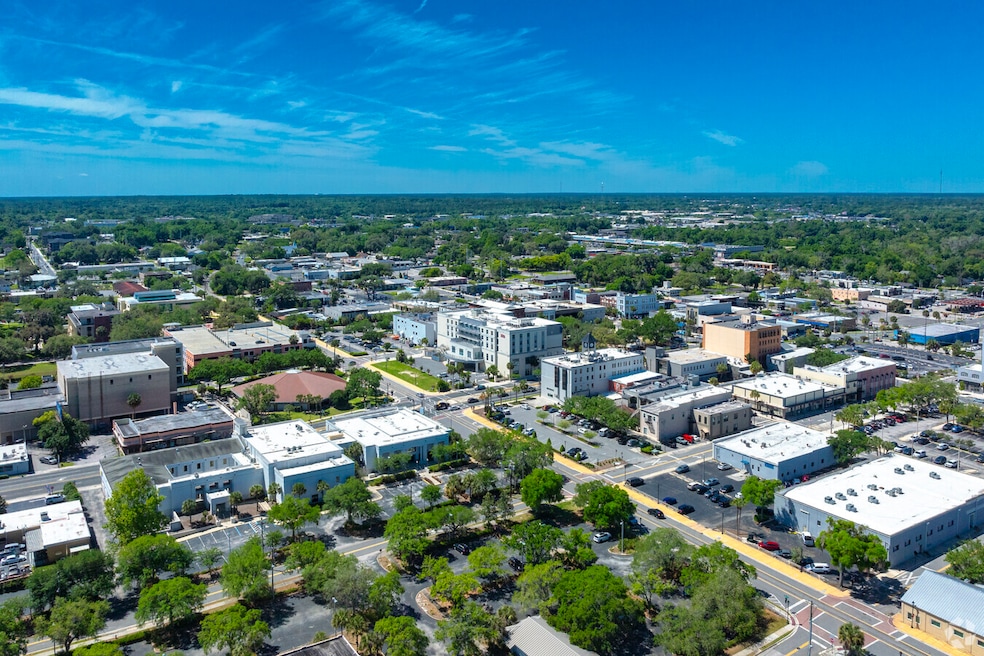The one-two punch of soaring home prices and rising mortgage rates have caused the number of affordable homes to shrink nationwide. But the trend appears to be even more pronounced in mid-sized cities across Florida.
The list of 20 cities where housing affordability fell the most in the third quarter includes Deltona, Lakeland, Naples, Ocala, Panama City, Port St. Lucie and Punta Gorda in the Sunshine State, an Oxford Economics study found. Some cities in the western United States also made the top list of housing affordability declines — including Albuquerque, New Mexico; Boise, Idaho; Ogden, Utah; and Tucson, Arizona.
Florida's housing affordability dropped for two main reasons, said Barbara Denham, lead economist at Oxford Economics. The first: more Americans have moved to the state in the past five years or so, she said.
"Seniors moved there but other ages as well,” Denham said in an interview. "But there were a lot of people who invested in second homes there, so there was an extra layer of demand."
Some Americans bought a second home in Florida so they could escape harsh winters up north while others purchased a home there as an investment property, said Denham, who authored the Oxford Economics study. As demand for Florida homes skyrocketed, so did their prices, she said.
The Oxford study noted how some of the Florida cities experiencing a decline in affordable homes are well-known retirement destinations. Lisa McNatt, market analytics director for central Florida at CoStar Group, the owner of Homes.com, said Americans who have retired to Florida in recent years are not opting for an ocean-view community to live out their golden years.
"The state has more than 8,400 miles of shoreline, or roughly 9% of the U.S. total, including Alaska, yet coastal areas have not been drawing the lion’s share of this age group in the last five years," McNatt stated in a report last month.
For Americans 55 and up, "beach destinations have given way to inland locations," McNatt said.
Elevated mortgage rates alongside rising Florida home prices created the lack of affordability the state is seeing these days, Denham said. The median home sales price in Florida hit $410,400 last month, up from $263,000 in October 2019, according to the trade group Florida Realtors. During that same time, the interest rate on a 30-year mortgage grew from 3.78% to 6.78%.
Demand surge
Being able to afford a home has become a major financial pain point for millions of Americans as home price increases have outpaced wage growth. The nation's supply of affordable homes has not kept up with demand, which started to surge months after the pandemic. The incoming Trump administration said it plans to address housing affordability, in part, by cutting "unnecessary" regulations on home construction, making some federal land available for residential housing and giving tax incentives to homebuyers.
An affordable home is defined as someone spending one-third or less of their gross monthly income paying the mortgage and utilities. The Oxford study found that the typical American household would need $107,700 a year to afford a home, up from $56,800 in 2019. The U.S. median household income is $80,610, according to the most recent U.S. Census data.
Denham and other researchers at Oxford examined home prices and annual income statistics for Americans living in 173 U.S. metropolitan areas. The study findings are based on a homebuyer putting 20% down on a purchase while being able to pay the mortgage, property taxes and homeowners' insurance for the residence.
The Oxford study also found that Honolulu; Hawaii, San Jose, California; Los Angeles, San Francisco and San Diego have the nation's highest share of unaffordable homes. By contrast, cities with a higher share of affordable homes are in the Midwest, including Detroit, St. Louis, Decatur, Illinois, and Youngstown, Ohio, the study found. That's partially because Americans have moved away from those cities, creating a weakened demand for housing, Denham said.
"You saw a lot of people leaving the Midwest for Florida and Texas," she said. "Many cities in the Midwest like Cleveland haven't seen fast job growth in many years, so that has kept costs down too."


